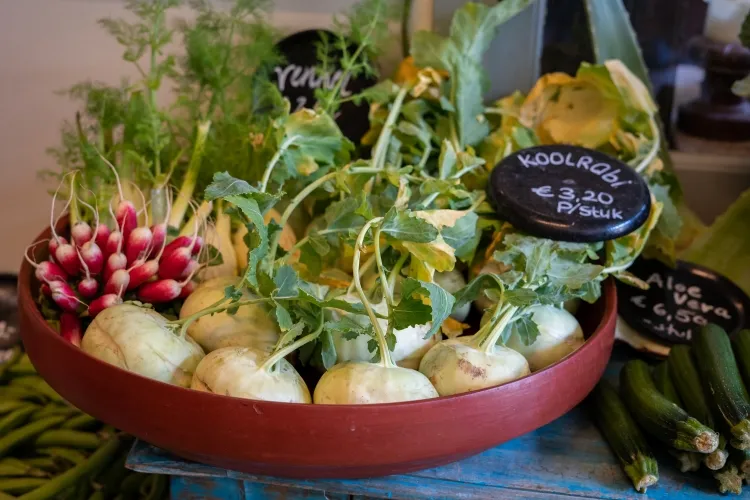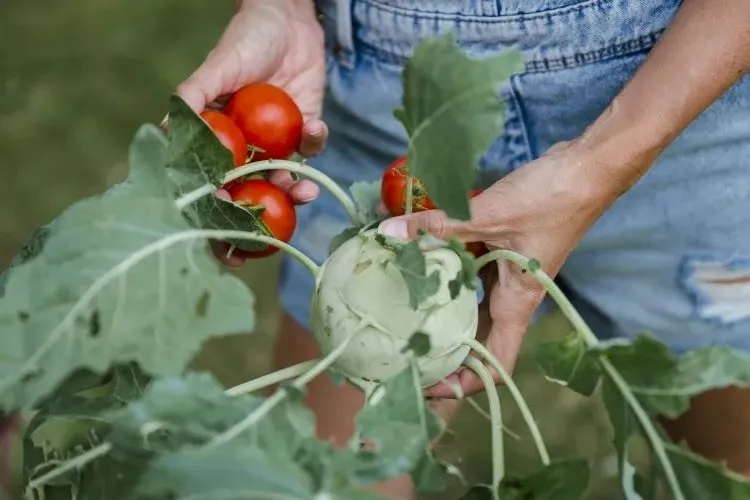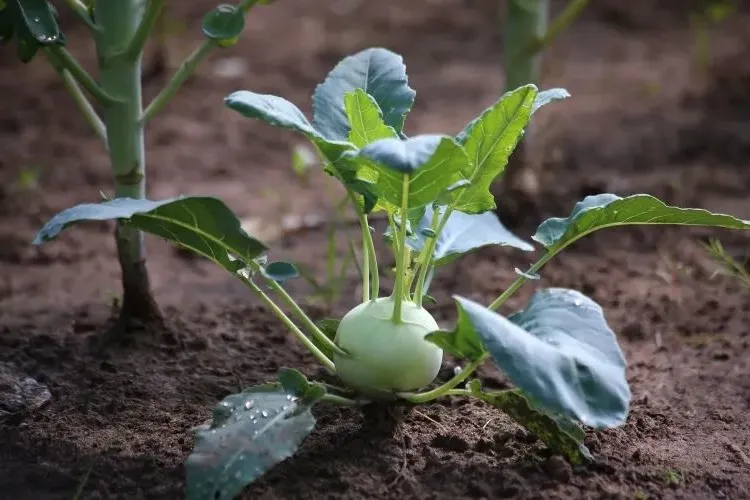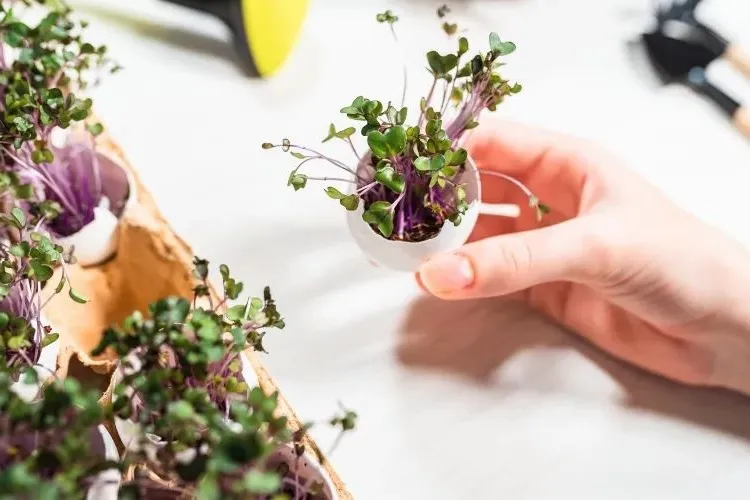The large Brassicaceae family includes members that are odd in appearance and different in size, but always with essential nutritional qualities. What place does kohlrabi cultivation occupy among them? Below, is an unvarnished presentation of this often-neglected vegetable!
Grown all over the world and present in sophisticated menus, broccoli, Romanesco cabbage, and Brussels sprouts have undeniable culinary glory. The drop in temperatures brings to the market a vegetable whose strange appearance evokes smiles. Is growing kohlrabi worth the effort, and is it easy to plant and harvest? When to do it? An uncompromising look at this economically important crucifer.
How to Grow Kohlrabi: Cultivation on the World Market
Is kohlrabi growing popular, and how far does its popularity extend? This cool, alien-looking seasonal vegetable is particularly popular in Germany. There is no other country in the world where kohlrabi is grown or consumed as much, which is why the German name “kohlrabi” has even been adopted in English, Japanese and Russian. The countries that cultivate the most are China, five times more than Russia, India and Korea. Kohlrabi is cheap, nutritious, healthy, bulky and above all, incredibly versatile. Its flavour is somewhere between radish and broccoli stems, it is delicious raw and cooked. If you have tried the nutty taste of Romanesco cabbage, you will be tempted to include kohlrabi in your menu. It tastes similar to a stalk of broccoli, but a little more tender and sweet. Whatever its condition, this crucifer shows particularities which must be considered.
Is Kohlrabi Worth Growing?
This unusual Brassica is not widely available in supermarkets, so it is worth growing your own. The base of the swollen stem, often called a bulb, may have green, white, or purple skin, with pale green or white flesh inside.
Before eating, peel the tough outer layer to test the white interior, which is soft and tender with a crunchy texture and peppery flavour. To some, kohlrabi tastes like turnips, to others like apples. It can be eaten raw, sprinkled with salt and lemon juice. In thin slices or grated, it refines the taste of salads. To cook, prepare it as you would a stalk of broccoli. Chop and add to a stir-fry or soup, roast in the oven, steam, etc. The leaves are also tasty and can be used in the same way as kale.
Aside from taste, growing kohlrabi is valued for its nutritional value. It offers vitamins C, A and K, minerals like calcium, potassium and iron and phytochemicals that protect against certain cancer types. The leaves of the vegetable are also nutritious and contain carotenes, vitamins and minerals. Like other Brassicas, the stem and leaves are rich in dietary fibre, which promotes digestive health.
Is Kohlrabi Easy to Grow?
It’s never late to try something new. Two are the advantages of growing kohlrabi that will encourage you to do it. It matures quickly (in just 6 weeks) and is not a target of certain parasites. Where does it grow best? Sun and rich soil are the promising factors you need to consider. Cultivation requires at least 6 hours of direct heat and a slightly acidic, well-drained potting soil. Although kohlrabi is not a heavy feeder, it can be boosted with a 3cm layer of compost before planting.
The principle of crop rotation is not recommended in this case. Avoid planting kohlrabi where other vegetables in the Brassicaceae family have been grown in the previous 2 to 3 years to prevent the spread of disease and nutritional deficiencies.
When & How to Grow Kohlrabi?
If in the warmer regions of the producing countries, it can be cultivated as a winter vegetable.
You can harvest kohlrabi from early to mid-summer if you plant the seeds directly in soil where the temperature has reached at least 7°C/44.6 °F. If you’re not the risk-taking type, start indoors by sowing 6 to 8 weeks before your last spring frost date. Also harden off seedlings before planting them outdoors.
Moderate but regular watering satisfies the need for humidity.
Planted at a shallow depth (1 cm), the seeds must be spaced 5 cm apart, while the rows they form must keep a distance of 25 to 30 cm.
Seedlings that appear a week later must be thinned every 12 to 20 cm. In case of low humidity, spread a thin layer of straw or bark mulch.
You won’t allow any weeds to smother your seedlings, that’s for sure, but be careful not to disturb their roots while the plant is still young.
Does Consuming Kohlrabi Hide Any Disadvantages?
No contraindications have been identified. Restrictions in consumption relate to those who have acute pancreatitis. Some report a slight increase in the acidity of gastric juice. There are also cases of individual intolerance.




